The articles in this Newsletter are the opinions of the authors and not necessarily those of the producers of The Feathers In the Wind Newsletter.
|
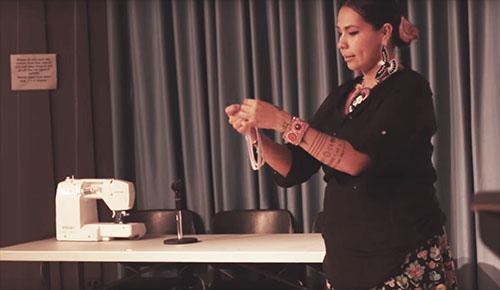
Making a Ribbon Skirt with Tala Tootoosis
Ever wanted to make a ribbon skirt? Tala Tootoosis walks you through the process.
|
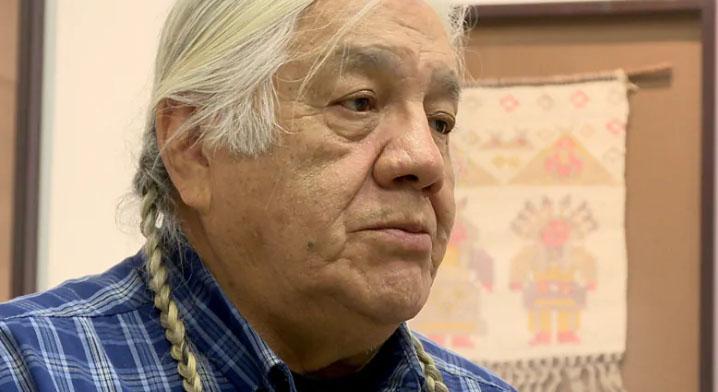
'When we speak we regain our identity': ACAD course keeps Dené language alive
Jo-Mary Crowchild-Fletcher stumbles through the consonant-heavy syllables as she repeats along with the rest of the class: "Ts'i, ts'a, ts'o, ts'u."
She's one of 25 students at the Alberta College of Art and Design's Lodgepole Centre studying the at-risk Dené language.
Crowchild-Fletcher is Tsuut'ina, but grew up in the B.C. foster system - so she never had the opportunity to learn her ancestral tongue. She hopes to be able to speak Dené not just conversationally, but in traditional ceremonies.
"It's spiritual and it's holistic in a sense that a piece of me I didn't have growing up, it's returned to me," she said.
|
 |
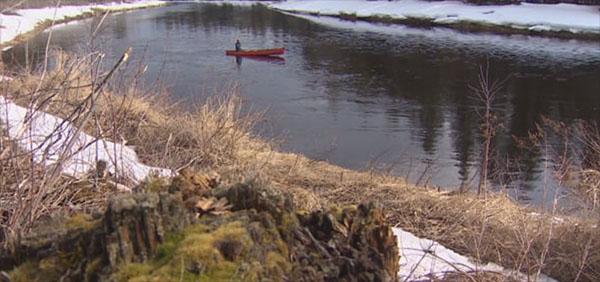
The secret path: Bringing back a nearly forgotten ancient portage trail
Deep in the woods of eastern New Brunswick lies a little-known pathway, a portage route that served as an incredible shortcut for Indigenous people at least a millennium ago.
The path in Harcourt, about 50 kilometres from Elsipogtog First Nation, connects a branch of the Richibucto River with the Salmon River.
But in effect, the four-kilometre trail connects the waters of the Gulf of St. Lawrence to the waters of the Bay of Fundy.
"It's as if you're standing in the middle of New Brunswick," said Susan Levi-Peters, the former Elsipogtog chief. "And you're looking down, and one of the rivers is going this way and the other river is going that way."
Although only about a metre wide, enough to carry a canoe through, the trail has become a project of several men and women across New Brunswick who are working to restore it and honour its contribution to history.
|
 |

How to be healthy with Native American remedies
Native American survival skills are perhaps one of the greatest things that we can all learn. Living a good and healthy life is a subject that the Native American tribes people have mastered over their long history. Their wisdom and everything they know they learned from having a close relationship with Nature and by following its rhythm. Learning from animal behavior, gaining knowledge from the many plant specie all while respecting them deeply at the same time. Native American tribes are known for their natural healing skills. You can get a greater understanding of their abilities when you learn about their way with plants yourself.
|
 |
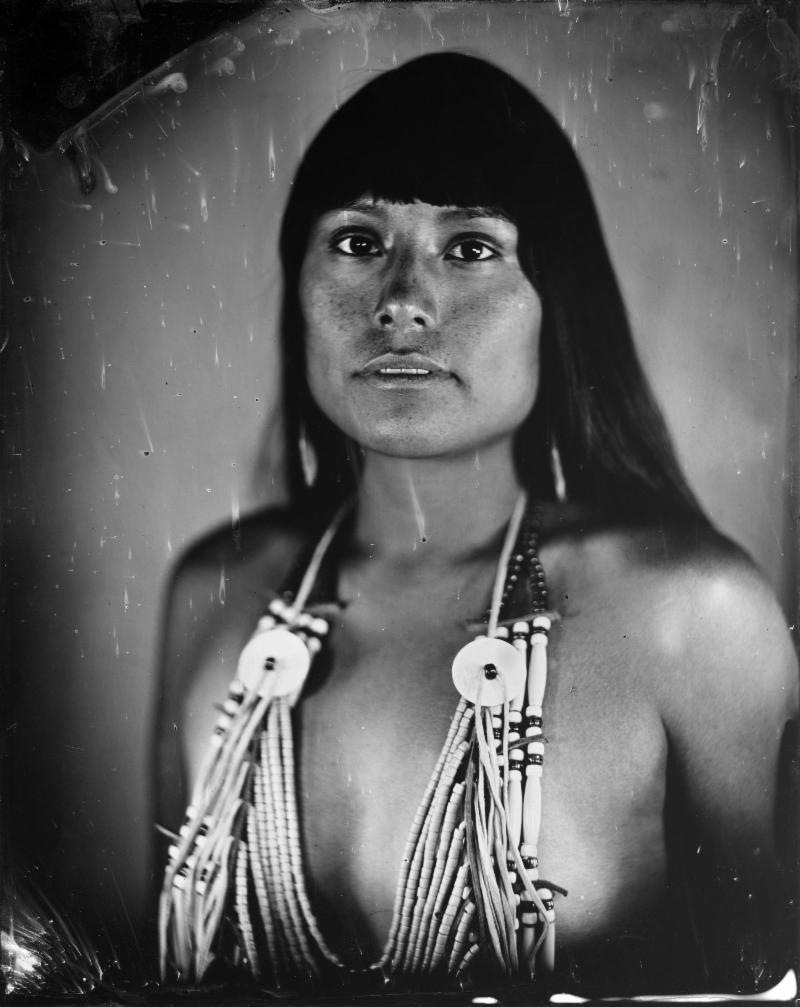
Reclaiming an old medium to tell new stories of Native Americans
The portraits' revealing details-a baseball cap, tank top, wristwatch, down vest-contradict their old and withered appearance. What at first seem to be historic photographs are actually contemporary tintypes, images from respective projects about Native Americans from artists
Will Wilson and
Kali Spitzer.
Although their work employs an archaic medium, Wilson and Spitzer's photographs have much to say about present-day Native American life. Wilson, a citizen of the Navajo Nation who is also of Welsh and Irish decent, sees his project as a collaboration with indigenous artists, arts professionals, and tribal leaders who, through their sessions, actively engage and dialogue with him. His evocative photographs counter longstanding stereotypes and distortions, contributing to "a re-imagined vision of who we are as Native people," says Wilson.
|
 |
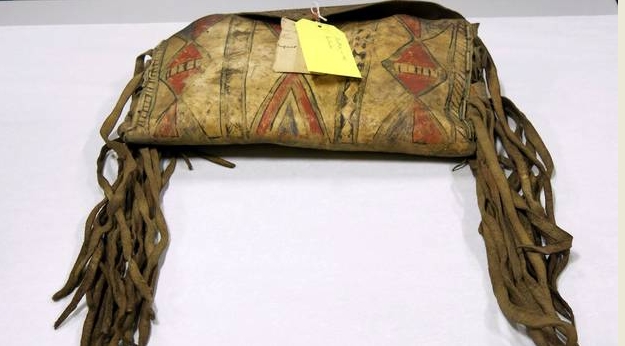
After 120 years, British return artifacts to Native American tribe
Tribal artifacts that have been hidden away in the archives of the British Museum in London for nearly 120 years are being returned to a Native American tribe for an exhibit at its own museum
The 16 objects will go on display Tuesday on a small Oregon reservation after a decades-long campaign by the Confederated Tribes of the Grand Ronde to bring them back from Europe.
The intricate bowls, woven baskets and other pieces were collected by the Rev. Robert W. Summers, an Episcopal minister who bought them from destitute tribal members in the 1870s and sold them to a colleague. The colleague later gifted the objects to the British institution.
The "Rise of the Collectors " exhibit, on display at the Chachalu Tribal Museum & Cultural Center in Grand Ronde, also includes basketry collected by Dr. Andrew Kershaw, who worked on the reservation in the 1890s as a doctor and agent for the federal Bureau of Indian Affairs. Grand Ronde is about 70 miles (110 kilometers) southwest of Portland.
Together, the two collections are part of a larger plan by the Grand Ronde to reclaim and examine its history for future generations - a mission that echoes efforts by other tribes around the United States. Two years ago, a Parisian auction house withdrew a ceremonial shield from an auction after the Acoma Pueblo, a tribe in rural New Mexico, moved to halt its sale. And tribes from Alaska to Connecticut have used a U.S. law passed in 1990 to reclaim Native American remains and sacred or funerary objects.
|
 |
Our editors are always looking for original submissions that would be of interest to our community. Do you know of any upcoming events that you would like to share through the Newsletter, Facebook, or our new website?
If you have something you would like to add to future issues we would be happy to consider it; please call or email us with the title "Submission" on the email. Thank you!
|
|
Ontario Métis Family Records Center
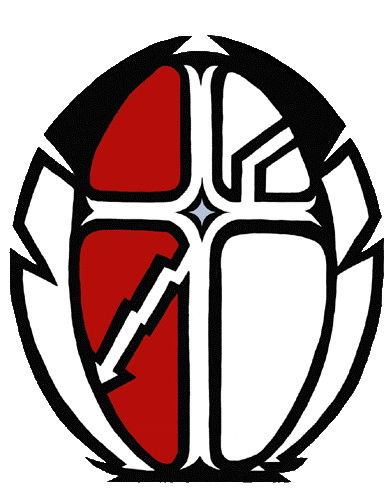
We're on the web!
See us at:
|
|
 |
|
All plants are our brothers and sisters. They talk to us and if we listen, we can hear them.
~ Arapaho
|
 |
An Essay On One
Man's Metis Identity
~ This article was submitted to the OMFRC by one of our members, Joshua O'Reilly, and also represents a portion of his application for Medical School. Thank you so much for sharing, Joshua!
It was a special time when my family's aboriginal migration and history-a history which ranges from Canada back to the 1700s in Chota, Cherokee Nation-was confirmed by researchers, and I received membership with the Métis Nation of Alberta. After moving, and with the passing of my mother, I temporarily lost access to records which I have subsequently rediscovered, and reconfirmed, with the help of the Ontario Metis Family Research Center, and am now a proud member of the Painted Feather Woodland Metis association, which consists of a vibrant community of more than 15,000 members.
One particular story I cherish is that of my ancestor, Nany'hi The Ghi-Ga-U. She was so titled as "beloved woman" due to exceptional valour she showed by picking up her husband's rifle when he was killed and helping win a battle. Despite this, she was also known as a peace-loving woman-striving to maintain good relations between native and settler communities. I love, and identify with, the duality in her nature-showing both the passion for standing up and protecting others, and devotion to living peacefully. With that said, my life, rather than a status card, has always reflected a Métis life.
|
 |

Congratulations Caitlin McCarthy!
Caitlyn and her nephew Liam are both members of the OMFRC community and are proud to say they are direct descendants of Marie Olivier Sylvestre and Martin Prevost.
I was honored as the Red Sox Most Valuable Educator for September 15, 2018. The Boston Red Sox recognized me for my teaching, screenwriting, and DES activism on the field at historic Fenway Park during the pre-game ceremony. They also presented me with a personalized jersey!
In the photo, my nephew Liam Shields (also an OMFRC member) is to my right, along with his friends Kong and Luke.
In the video clip, I appear beside Wally (the Red Sox's mascot) and on the Jumbotron. Below is what the Red Sox's announcer said during the ceremony: "Worcester native Caitlin McCarthy has served as an English teacher for over 14 years at Worcester Technical High School. During Caitlin's tenure at Worcester Tech, the percentage of students scoring at or above proficient on the MCAS English exam increased from 13% to 98%. Worcester Tech has been recognized as a National Blue Ribbon School. In 2014, President Barack Obama delivered the main address at Worcester Tech's graduation. In addition to teaching, Caitlin is an award-winning screenwriter, published author, and globally recognized activist for victims of the DES drug disaster. Caitlin always tells her students that 'work conquers all,' and firmly believes that to educate is to liberate."
|
 |

Ordinary Women - Jeanne Dugas
of Acadie
Editor's note: This story is significant because many Metis were displaced during The "Great Upheaval" that saw thousands of Indigenous people displaced from their homes. They shared many of the same experiences.
The summer before I started my PhD, there was a massive reunion of my grandmother's side of the family in my hometown of Cheticamp. It's the type of thing that used to happen on a fairly regular basis when I was a kid, but has started becoming a rare event now that my grandmother's generation has largely passed. My cousin put together a family tree, dating back to the founding families of Cheticamp, and I didn't really think much of it until a few years later when I was back in the village for a visit with my sister. One of our ancestors, Jeanne Dugas, was getting a lot of attention that year; a
novel had been written
about her, the federal government had recognized her as a
"Person of Historical Significance",
and one of my dissertation advisors, Dr. Elizabeth Mancke, had recently brought home a sheaf of deportation-era documents from the UK that included Jeanne and her family. While juggling the demands of dissertation and digital history projects, I would sometimes find the time to dig into our Jeanne's history. Although I had been largely unaware of her prior to that family reunion, other than as one of the names on the list of the "quatorze vieux" who had founded our village, I became more fascinated with her the more I learned about her.
|
 |
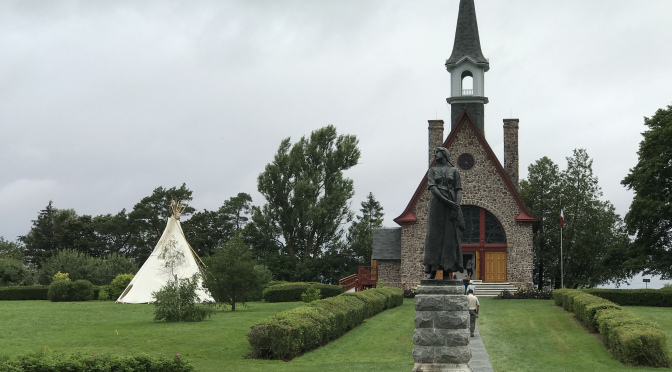
Wela'lioq: Acadian letter to the Mi'kmaq
Wela'lioq. Thank you to the Mi'kmaw people and to their ancestors.
Thank you for being at our side at the darkest hour of my people, the Grand Dérangement (Great Upheaval), also known as the Acadian Deportation.
I am alive today because of the Mi'kmaq. I want to thank them. I owe them my life and that is a debt I cannot possibly repay.
I was not there in September 1755 in Grand-Pré. I can only imagine the horror of families, husbands and wives, and their children torn asunder. Men, embarked on vessels mandated by the British Crown, must say good bye to their beloved Acadie. Did they know then that they would never be able to return to the land that their ancestors had harvested for more than a century?
|
 |

Knowledge keepers: How Western science and Indigenous knowledge intertwine
While Indigenous science is largely based in traditional knowledge and storytelling, Western science relies on an established set of rules and empirical study. But does this make these two approaches incompatible?
As part of a CBC Radio holiday special,
Unreserved host Rosanna Deerchild and science columnist Torah Kachur explore areas where traditional knowledge and Western science converge to explain various phenomena.
|
 |

How naked Burt Reynolds ended up
in a Native
art gallery in Seattle
Jolene Haas, daughter of Duwamish Tribe chairwoman Cecile Hansen, was walking through the Steinbrueck Native Gallery in downtown Seattle this past May when she spotted an interesting looking paddle tucked away in the corner.
Haas had gone to the gallery looking for a gift. But she quickly realized the paddle wasn't quite what she thought.
"I was informed that if I looked closely I would see the picture," Haas told KUOW. "And if it was for someone as an honoring it would not be appropriate."
The cedar paddle depicted the iconic image of a naked Burt Reynolds on a bearskin rug. It was made by Tlingit artist Alison Marks.
"'That makes sense,' [I thought] as I laughed hysterically," Haas said. "I think most of our moms had that poster in the '80s."
Marks, whose work was recently shown at a major
solo exhibit at the Frye Art Museum last year, told KUOW that her depiction of Reynolds was an answer to the male gaze found in many contemporary pieces in the Northwest Coast art market.
|
 |

Can Thanksgiving Be Redeemed?
Autumn weekends in Wasauksing First Nation can provide a breathtaking reminder of the Creator's glory. The rich fall colours not only inspire with their beauty, but they serve to remind us of nature's endless cycle of life.
October also brings the Canadian Thanksgiving weekend, a holiday that stirs many negative feelings among Indigenous Canadians. Fall harvest gatherings have long been part of Native society, particularly in Eastern Woodlands culture, and October is traditionally when some of our communities would plant the "Three Sisters" (corn, beans, & squash) for next year's bounty. In days past, many tribes would hold large harvest Pow Wows as a final opportunity to be together before hunkering down for the long winter, a chance for storytelling and passing down our oral tradition.
So, while many of us appreciate and hold dear the harvest gathering spirit that is often associated with Thanksgiving, we can't separate it from the other main element of the holiday - a "celebration" of European colonization of Turtle Island and the romanization of early settler culture.
|
 |
 |

The OMFRC would like to thank everyone that is standing with us to support the Ontario Metis Family Records Center Community Facebook Page.......your response is nothing short of incredible!
Stay connected and celebrate your heritage! Share that you're a member of the OMFRC Community with your family members on Facebook. It has never been more important to stand up and be counted!
Have you visited our Facebook page? We welcome you to join our OMFRC Community - we want to hear from you.
|
|
|